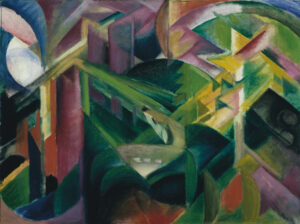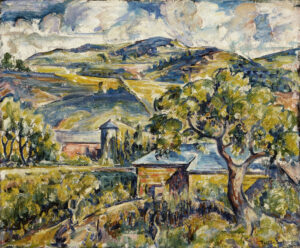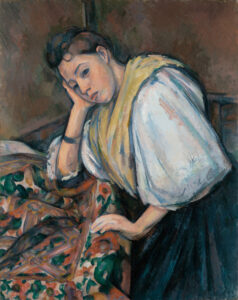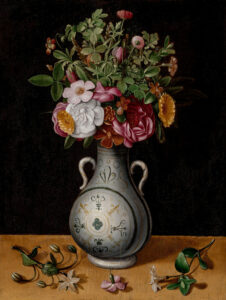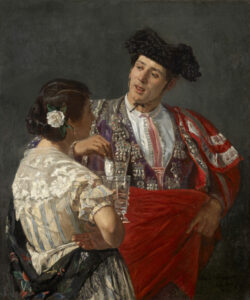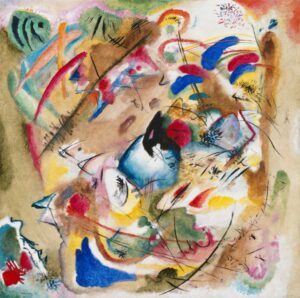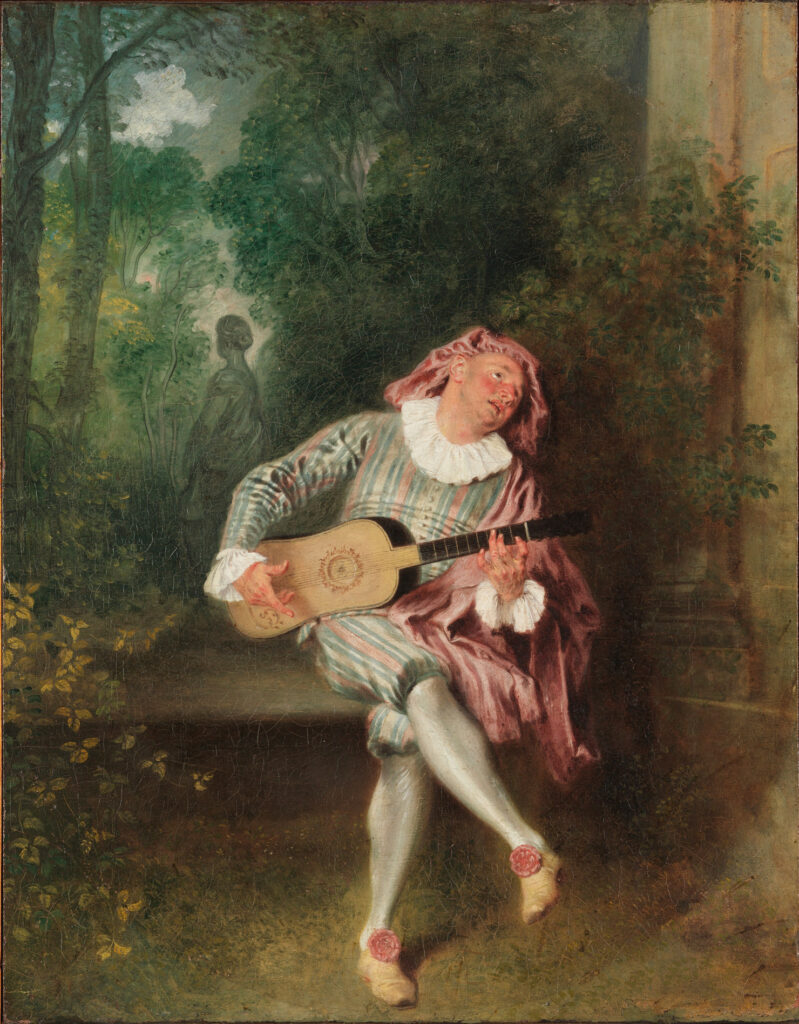
This work reveals Watteau’s consummate mastery in his pictorial transposition of the Italian theatrical world.
Mezzetin, an emblematic figure of the commedia dell’arte, appears here captured in a moment of amorous melancholy. The artist deploys his colorist genius through the character’s traditional costume: striped jacket in green and pink tones, high breeches and immaculate collar that subtly capture the play of light filtered through the vegetation. Watteau’s technique reaches remarkable refinement here, particularly evident in the delicate modeling of the hands holding the lute and in the silky folds of the fabrics. The female statue turning her back to the musician introduces a subtle narrative dimension, suggesting the torments of unrequited passion.
Further information
- Mezzetin, by Antoine Watteau, circa 1718-1720
- 21 3/4 x 17 in. (55.2 x 43.2 cm)
- The Metropolitan Museum of Art, Fifth Avenue, New York, displayed in gallery 629
- https://www.metmuseum.org/art/collection/search/437926
Undisputed master of early 18th-century French painting, Antoine Watteau (1684-1721) revolutionized the art of his time by creating an unprecedented pictorial genre: the fête galante. Born in Valenciennes, he trained in Paris in the workshop of Claude Gillot, a specialist in theatrical scenes, then with Claude Audran III, decorator to the king. This dual training explains his fascination with the world of commedia dell’arte and his taste for refined decorative compositions. Admitted to the Royal Academy in 1717 with his masterpiece “The Embarkation for Cythera,” Watteau developed a unique style blending Flemish realism with French grace. His pictorial technique, inherited from Rubens, is characterized by supple impasto and transparent glazes that give his works incomparable luminosity. Despite a brief career, cut short by tuberculosis, he profoundly influenced European painting and inspired the masters of the Rococo.

